
You may have heard about foxtail and that it poses a danger to horses. But did you know it can actually get embedded in their mouth needing veterinary removal? It even poses dangers to dogs and other outdoor pets, and can get embedded in their paws.
First, what is Foxtail?
Foxtail Barley (hordeum jubatum) is a showy short-lived native perennial cool-season bunchgrass that belongs to the grass tribe Triticeae. This plant ranges in height from one to three feet tall at maturity.
Livestock can safely graze foxtail barley prior to seed development. Once the seeds develop, livestock and other animals should no longer have access, as the seeds form awns (hair-like structures) that have small sharp barbs on them.
Foxtail is sometimes confused with Cheatgrass, Needlegrass, and Spear Grass – which also can pose similar problems to your animals.
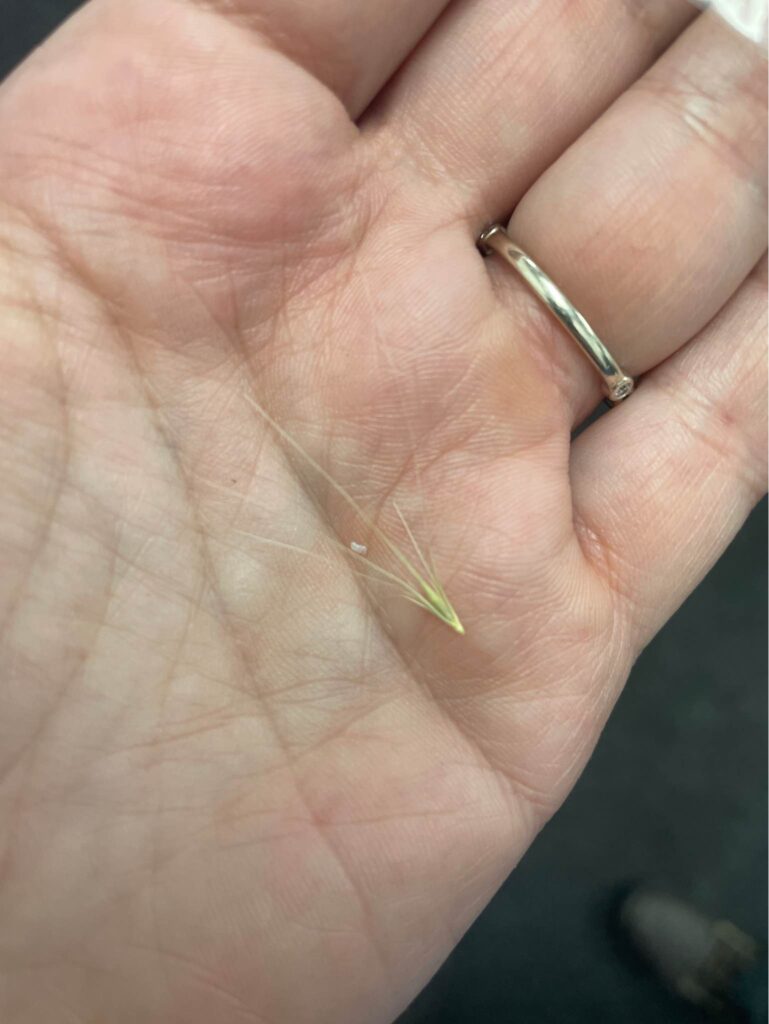
What threat does Foxtail pose to my horses, livestock, and other animals?
The Foxtail plant alone isn’t the issue. The seedheads from foxtail are what cause problems. The awns on the seedhead have very sharp barbs and those barns can and will become lodged in the skin, mouth, nose, ears, and eyes of grazing livestock. It can also become lodged in hair and fur, or even your clothing. Also to consider, foxtail can get lodged in the paws and fur of other pets such as dogs.
Once the awn has become lodged in your animal, it can cause abscesses, infection, and in some cases even get into the bloodstream and cause much more serious issues.
Some signs that your horse or livestock might have foxtail stuck in their mouth are:
- Opening of the mouth and/or moving the tongue around visibly
- Lack of appetite
- Drooling
- Blood coming from the mouth
- Visible sores on the tongue, on the cheeks, under the tongue
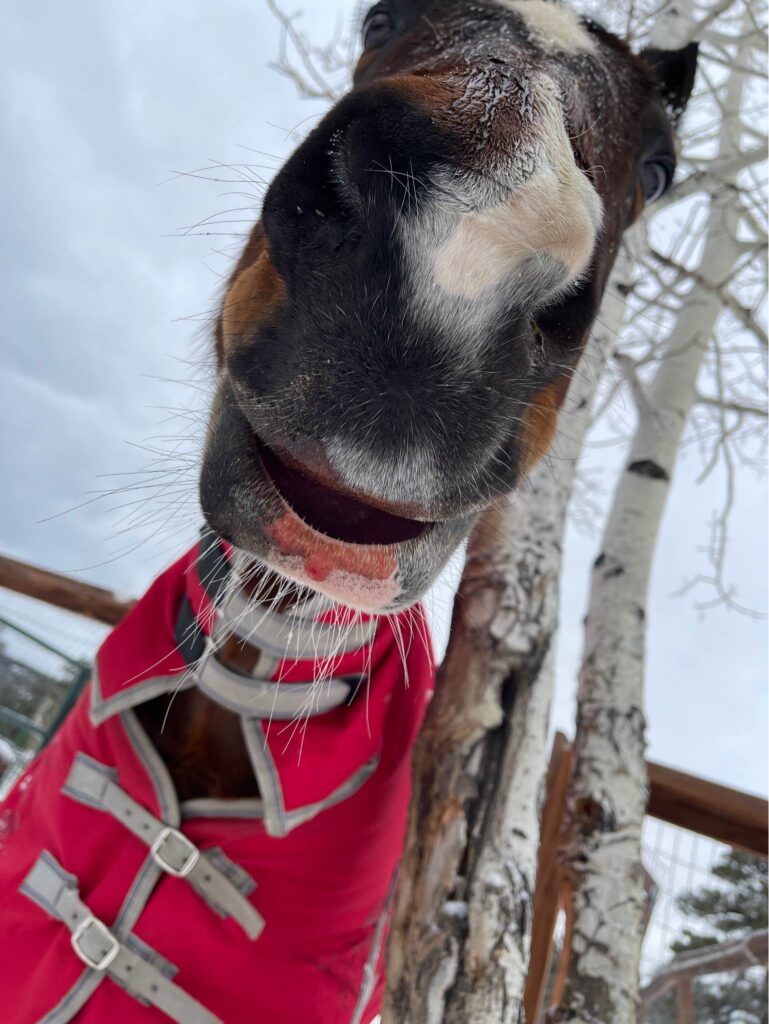
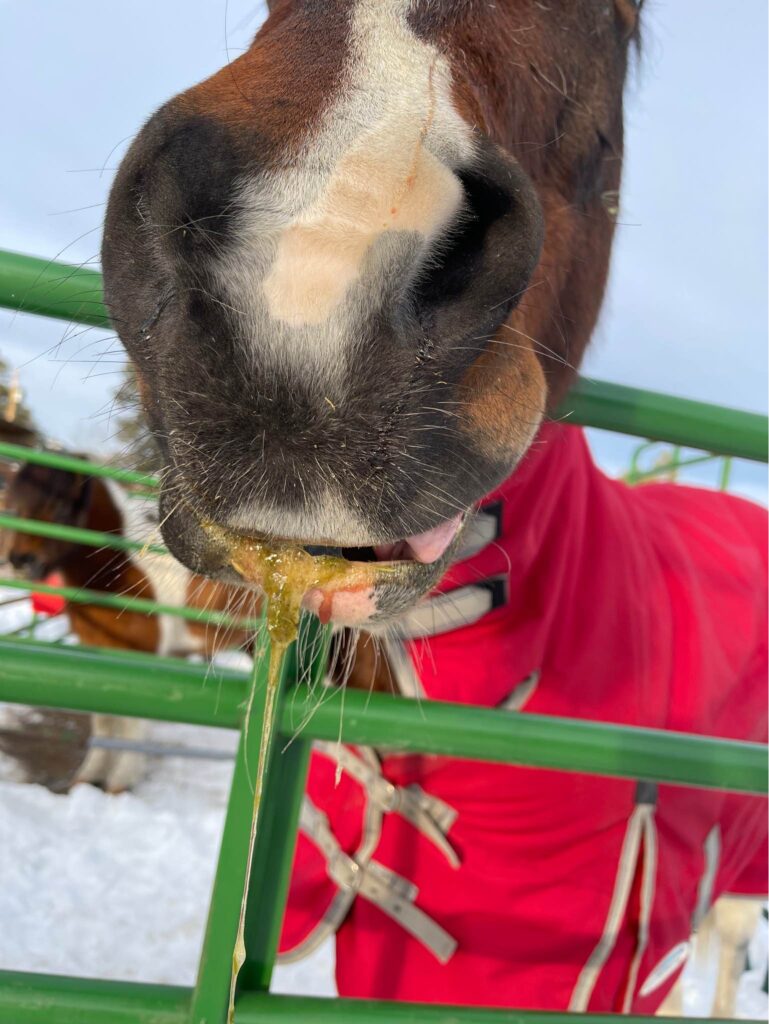
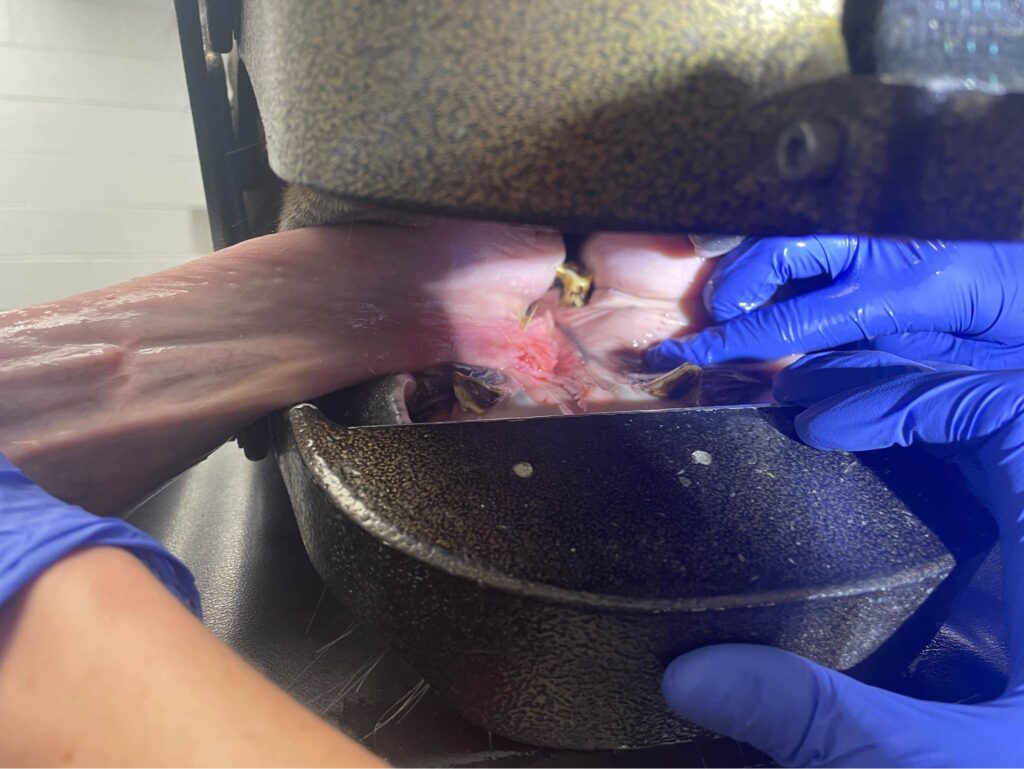
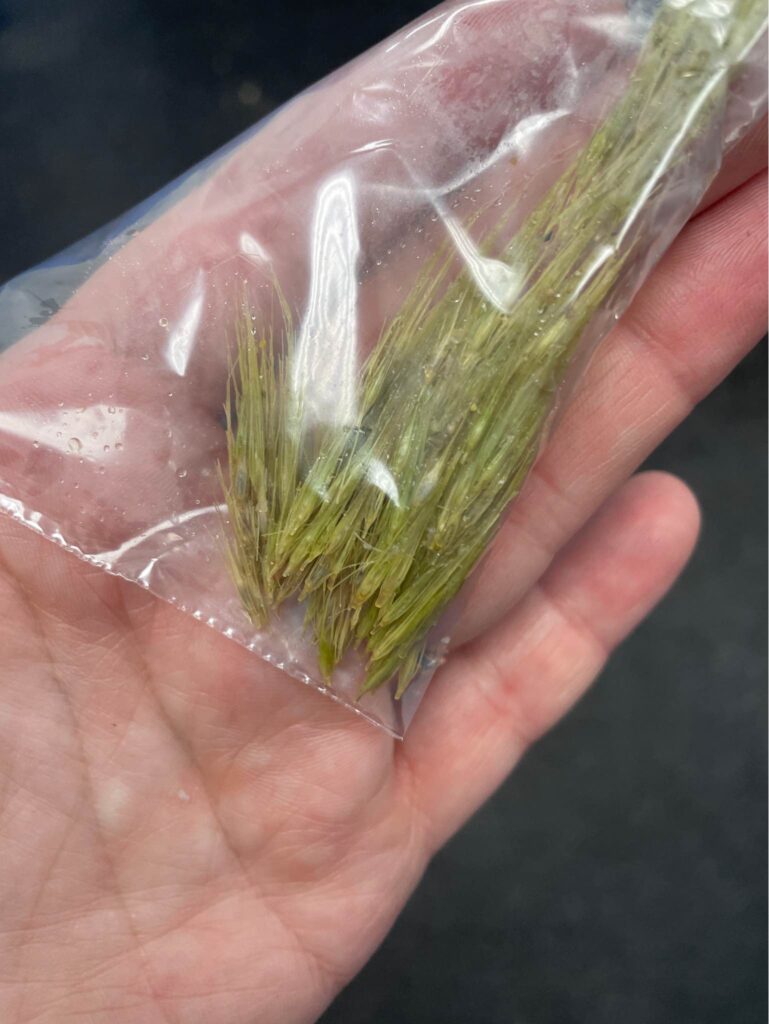
Please note you might not be able to see the foxtail without the sedation of your horse or livestock depending on how cooperative your animal is, and the exact placement. So if you are concerned your horse might be suffering from foxtail, please call your veterinarian as this can become a serious issue if not treated.
If foxtail is in your pasture, livestock will *typically* avoid it once it comes to seed (although we recommend getting rid of any signs of foxtail at first sight). If it is in your hay, there is no way for your animals to avoid it. Contaminated hay is not safe for livestock and should be discarded.

How do I control foxtail in my fields?
If you have foxtail (or other nuisance plants) in your fields and pastures, you should consult with your local CSU extension office to determine the best route of action. But if you keep your field mowed before it comes to seed, it will help it from continuing to grow and spread.
Find your local CSU Extension office here: https://extension.colostate.edu/
Download the Foxtail Barley Fact Sheet from CSU: https://extension.colostate.edu/docs/pubs/natres/03109.pdf
A huge thanks to Ellen, one of our moderators, for sharing her photos and experience with Foxtail.
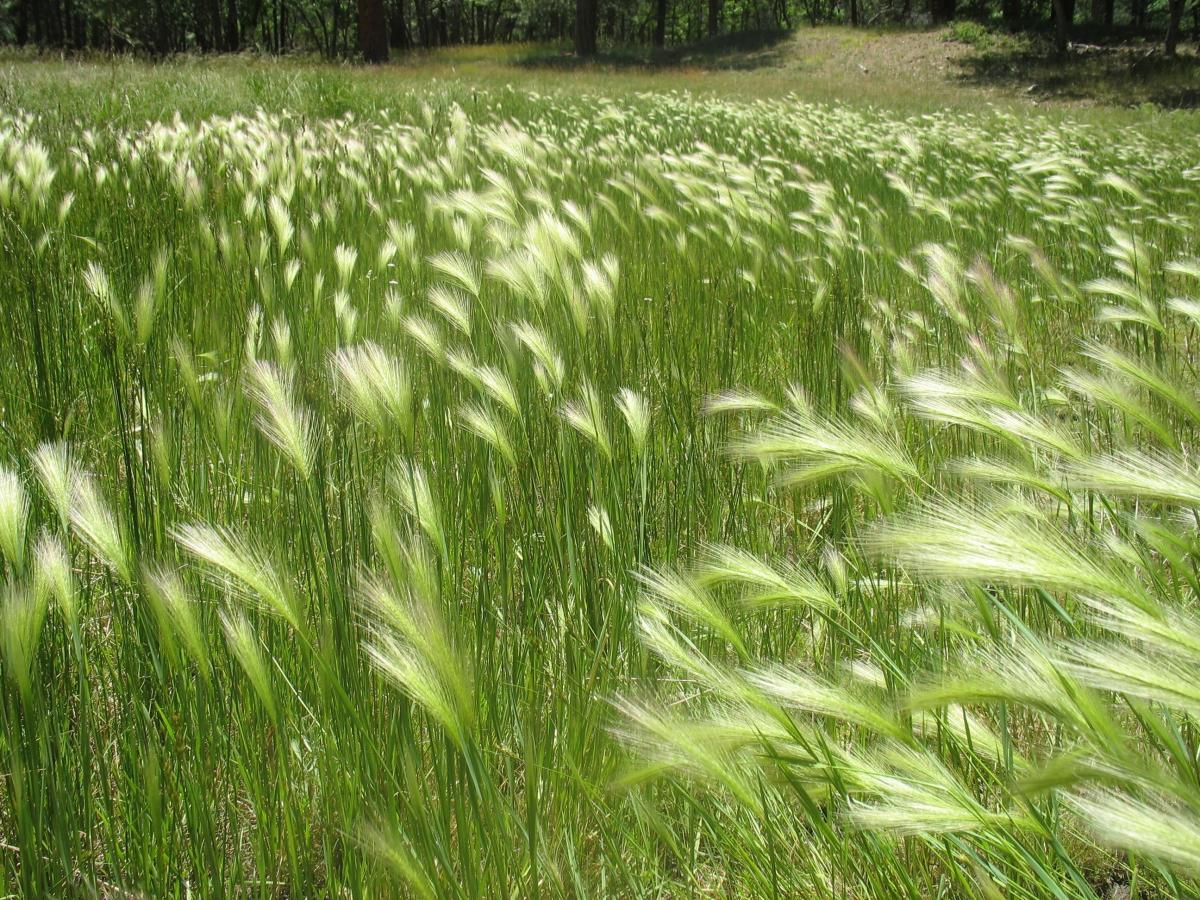

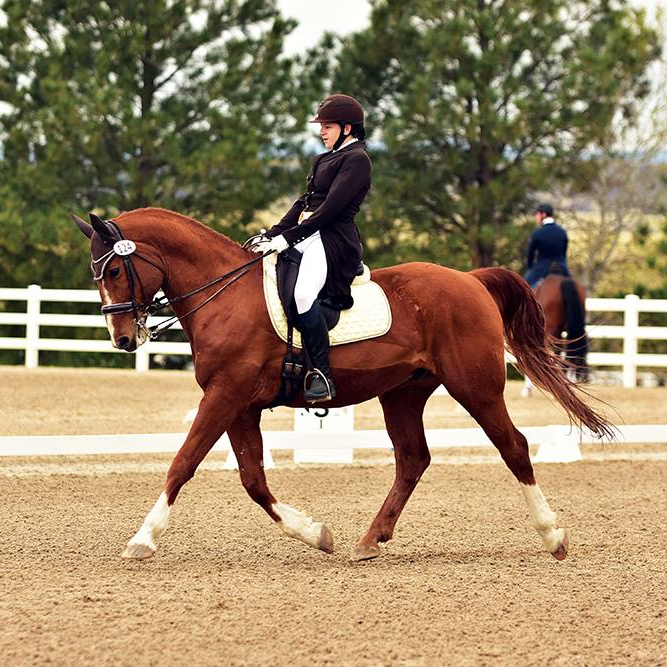



Leave a Reply
You must be logged in to post a comment.